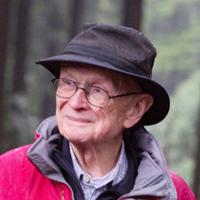- The Hundred-Year Trek: A History of Student Life at UBC
- Heritage House (2017)
Sometimes we ignore the institutions that shape us individually and as a society. Universities are one such institution; we just take them for granted as part of the cultural furniture. Yet they open up our minds, not to mention our opportunities for advancement.
You would think that once graduates had occupied the seats of political power, they would be eager to support the schools that helped put them there. You would be mistaken. Politicians in power, especially in B.C., have consistently underfunded post-secondary education rather than risk over-taxing their voters.
As Sheldon Goldfarb’s book makes clear, this was true even in the earliest days of the University of British Columbia. And you can even sympathize with the governments of a century ago: when graduating from high school was a rare achievement, post-secondary must have seemed a bit over the top. Universities might train some professionals and teachers, but it was a lot cheaper to import them from Ontario, the U.S. or the U.K. than to train them from scratch.
So when UBC was operating in downtown’s West End in 1915, its students had to put up with makeshift classrooms while the promised land of Point Grey, where the school resides today, remained remote and forested. Hence the “Great Trek,” when students marched to their future campus to put pressure on Victoria.
Marching and raising money
As this book makes clear, such student activism would play a large part in UBC’s history. Almost entirely male and locally brought up, those early students didn’t just march and go home; they marched and raised remarkable amounts of money to help build the university.
Sheldon Goldfarb has focused his book on the Alma Mater Society, which from early times has expressed students’ wishes by charging them fees, raising funds in other ways, and then putting up buildings as well as supporting clubs. As an institution, AMS is an order of magnitude more influential than most student “governments,” and generations of UBC alumni have gone on to run the province as they learned to do as undergraduates.
Goldfarb has consciously adopted the structure of The Chuck Davis History of Metropolitan Vancouver, pulling bits and pieces out of the student paper the Ubyssey’s news of the day as well as minutes of forgotten AMS meetings. It’s an entertaining approach, but it tends to emphasize trivia and the quaintness of yesteryear, rather than identifying themes and issues.
The themes that do emerge inspire more questions than answers. In particular, how the hell did the engineers get away with “pranks” that amounted to theft, assault and kidnapping? People the engineers didn’t like were routinely flung into ponds or kidnapped (Ubyssey editor Allan Fotheringham, later a major Vancouver Sun columnist, was kidnapped twice). Administration and the cops alike seemed to think this was just boys being boys, rather than privileged young men being thugs.
Remarkable achievements
But UBC students were capable of some remarkable achievements. After the Soviets crushed the Hungarian revolt of 1956, AMS Council raised money to bring three Hungarian refugee students to campus. That quickly spiraled into importing a couple of dozen, and then the whole Sopron Forestry School to UBC — to the advantage of UBC, B.C. and Canada’s reputation as a haven for refugees.
Gradually in the book, as decades pass, we see UBC students growing up. They sustain their ability to raise remarkable amounts of money for capital projects like gyms, but concepts like welcoming women into male-dominated professions elude them for most of a century. The baby boomers of the late 1960s at UBC picked up a whiff of the general student discontent around the world, but responded with far less energy and self-righteousness than their crosstown rivals at the brand-new Simon Fraser University — who wanted to bring down society, starting with SFU, before rebuilding it.
Goldfarb is aware that much student behaviour of the past century was, by today’s standards, worse than outrageous. So he makes occasional semi-apologies for it, which is as much as his format permits; he doesn’t really have room for analysis. Racism and sexism were simply part of the academic climate, but we commit the historian’s sin of “presentism” if we judge our grandparents by our own more enlightened standards. (And are we so sure our own grandchildren will approve of all our values?)
The book offers countless glimpses of student life over the generations, showing that some things never change and others have changed very much for the better. Most readers, I suspect, will be UBC grads most interested in events during their own years on campus.
Why no scholarship about universities?
It also raises a question: why have Canadian scholars largely ignored the history of Canadian scholarly institutions? Books and articles on individual universities and colleges tend to be corporate puff pieces, cranked out to celebrate some anniversary or notable figure.
But serious research into the origins and development of UBC (or any other university) would throw useful light not only on the university but also on its effect on the social, economic and political development of its province and the nation.
Such research might throw light on the university’s less admirable achievements, and few scholars are inclined to bite the hand that feeds them. But for tenured profs near the end of their careers, a well-aimed bite could be sweet revenge; it might also help nudge the dull conservative monolith of Canadian post-secondary into a painful but necessary evolution into a system better suited to a turbulent new century. ![]()
















Tyee Commenting Guidelines
Comments that violate guidelines risk being deleted, and violations may result in a temporary or permanent user ban. Maintain the spirit of good conversation to stay in the discussion.
*Please note The Tyee is not a forum for spreading misinformation about COVID-19, denying its existence or minimizing its risk to public health.
Do:
Do not: